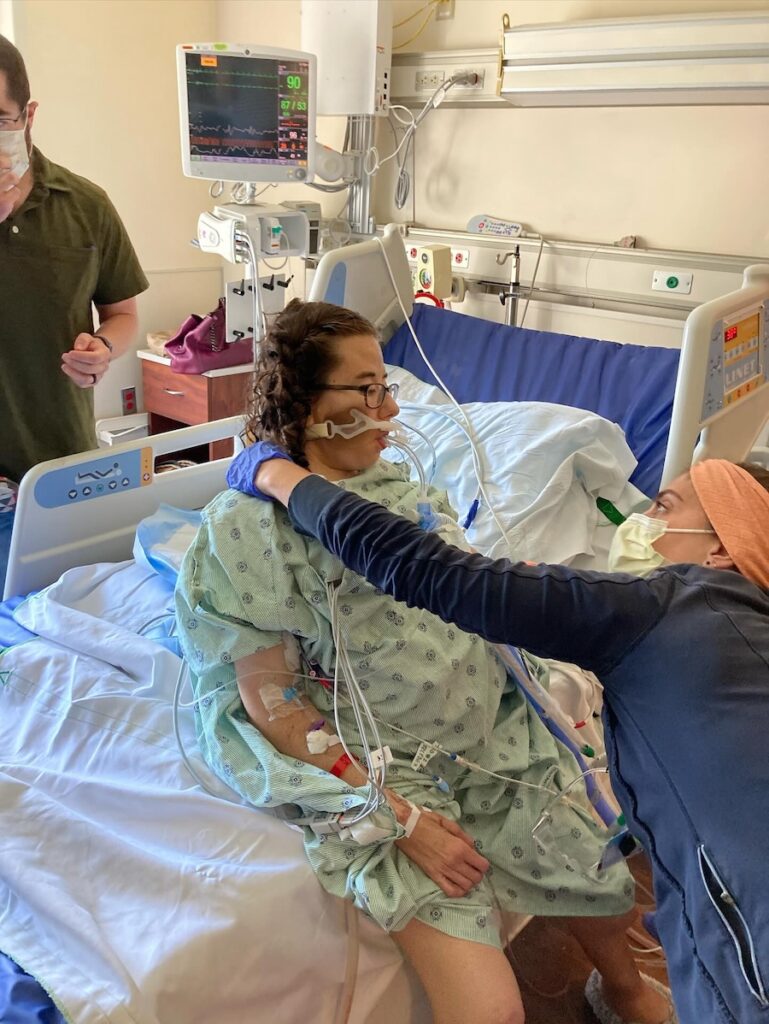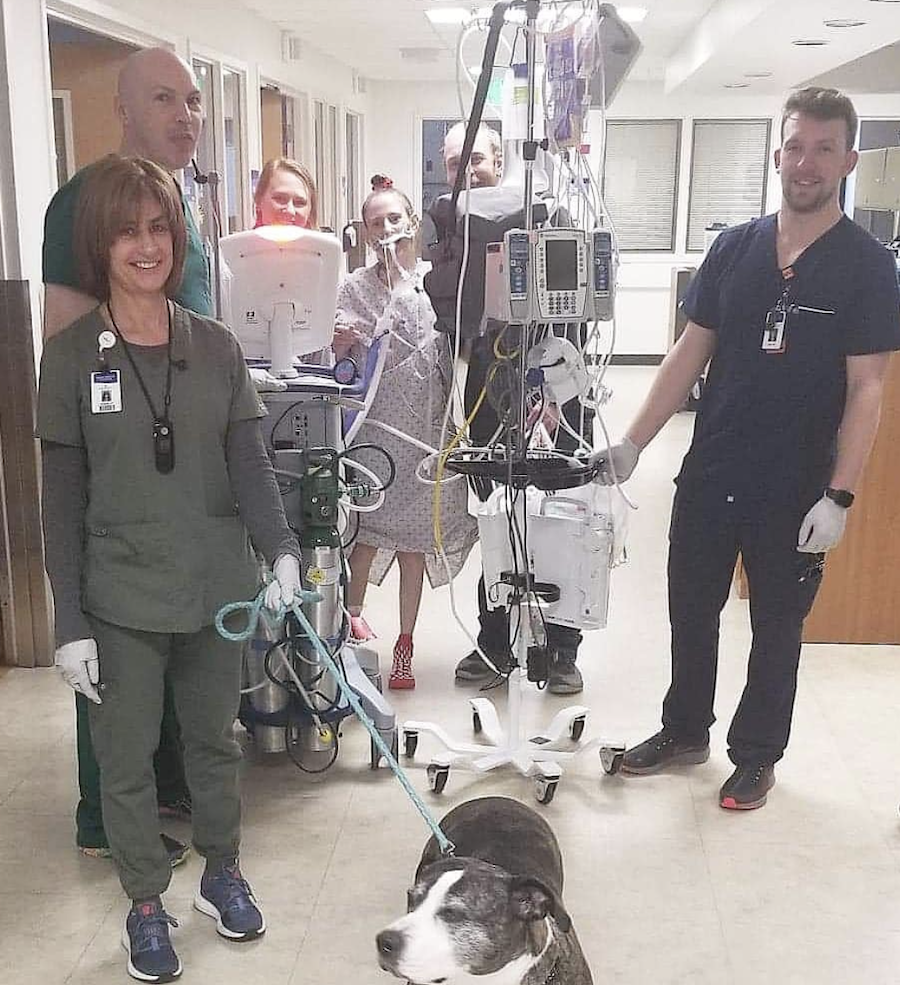For the past five years, I have been engrossed in exploring the history and current culture of the ICU, as they relate to the ABCDEF Bundle.
As a result, I’ve been faced with having to compare my ingrained understanding of early mobility to the cultural “norms” I see at the bedside, as well as in the literature.
One of the key differences between these two perspectives, which I’ve been confronted with, is the timing and focus (or lack thereof) on early mobility in the ICU.
This contrast is captured in the comparison between prehab vs. rehab, and the debate about which approach should be prioritized in the ICU.
Prehab vs. Rehab: What’s the Difference?
If you want to understand the difference between prehab vs. rehab and learn which approach should be prioritized in the ICU, you’ve got to know what each one entails.
That being said, let’s explore the difference between prehabilitation and rehabilitation.
What Is Rehabilitation?
The Oxford Dictionary defines rehabilitation as “the action of restoring someone to health or normal life through training and therapy after illness.”
In the context of the ICU, the literature usually states that “Early rehabilitation is essential to reducing complications associated with PICS. ‘Early’ refers to rehabilitation interventions that commence immediately after stabilization of physiologic derangements, often while patients remain on mechanical ventilation and vasopressor infusions.”
And after years of attending conferences, visiting with dozens of ICU teams across the U.S., and reviewing their data and protocols, it is clear to me that rehabilitation in the ICU is perceived as the inevitable need for intensive physical recovery after mandatory and standard prolonged bed rest in the ICU.
But what we see in studies published within the last 6-8 years is that the “intensive rehabilitation” intervention groups did not even have patients sitting at the side of the bed until 8 or 9 days after intubation.
Even the recent TEAM study did not sit patients up at the side of the bed until 4-6 days after intubation following prolonged sedation at a median RASS of -3.
Yet the TEAM study is being hailed as the model of “ICU rehabilitation” and is considered an earlier and more aggressive level of rehabilitation than what you’ll find in most ICUs in the U.S.
What I’ve witnessed is that although many hospital protocols will allow for mobility to occur during critical illness, and while patients are on vasopressors, etc., it is not actually occurring in practice.
The approach shared by most of the ICU community is that mobility will happen when ventilator settings are minimal, when the patient follows commands, after extubation, after the tracheostomy, after vasopressors are discontinued, etc.
It seems as long as physical or occupational therapy consultation orders are entered before the patient transfers from the ICU, early mobility is checked off of the list as done.
But when you consider that on average, critically ill patients lose nearly 2% of skeletal muscle per day during their first week in the ICU, it’s clear that delaying mobility can lead to devastating consequences.
These consequences, including the loss of physical and cognitive function, result in a desperate need for ICU rehabilitation.
As a result, ICU rehab tends to be implemented as the recovery from delirium and ICU-acquired weakness on the back end of critical illness.
But what if we focused more on preventing delirium and ICU-acquired weakness?
What Is Prehabilitation?

Prehabilitation is defined as a process of improving the functional capability of a patient before a procedure or treatment so they’re able to withstand any inactivity and associated decline.
That being said, most patients do not anticipate sudden critical illness, so how does prehabilitation apply in the ICU?
In 2002, Robert Topp defined prehabilitation in the ICU as “The process of enhancing functional capacity of the individual to enable them to withstand the stressor of inactivity associated with an admission to ICU.”
A prehabilitative approach in the ICU respects the fact that patients arrive at the ICU with risk factors for delirium and ICU-acquired weakness and may have a long and complicated hospital stay ahead of them.
At this point, their physical, cognitive, and psychological function are already in peril and require proactive intervention focused on the preservation of functional capacities.
This leads ICU teams to promptly implement interventions to prevent delirium and ICU-acquired weakness, such as nutrition, early mobility, sleep hygiene, and family engagement.
For most patients, prioritizing prevention rather than recovery can drastically change the outcomes they experience.
For instance, the timing of early mobility impacts short and long-term outcomes for patients in the ICU.
A recent study showed that when early mobility happens within 72 hours of ICU admission there is a positive impact on post-ICU syndrome, but these benefits are limited if early mobility is initiated after 72 hours have passed.
Another study revealed that mobilizing patients within less than 72 hours after intubation led to a 24% improvement in return to functional baseline and a two-day decrease in delirium and time on the ventilator.
We also know that mobilizing patients within 48 hours after intubation improves cognitive function by 20% one year after discharge.
Prehabilitation in Practice

For the first eight years of my career, I was unfamiliar with the term ICU rehabilitation.
All I knew was that physical and occupational therapy are a standard part of care with the same priority as antibiotics, vasopressors, and AM labs. Walking my intubated patients on the night shift was just as optional as their bed bath.
The word rehabilitation usually only came up on the rare occasion when we were disappointed that we were sending a patient to a care facility instead of back home.
Our shared goal was to have patients walk out of the doors and avoid extensive rehab.
But when I started working in an Awake and Walking ICU, our patients were mobilized within 12 hours after intubation unless there was a contraindication to mobilization.
The decisions of whether or not to start sedation, what type of sedation to use, and whether or not to mobilize patients were esteemed as a “clinical priority on a par with early resuscitation, early sepsis management, and a lung-protective strategy.”
When the teams I train adapt this prehabilitative approach, they immediately notice the contrast in patient outcomes and workload.
What’s more, they enjoy being able to protect patients from the occurrence and severity of ICU delirium and ICU-acquired weakness, rather than having to rehabilitate patients after these complications have developed.
I trained Andrea Silva’s team in Denver, Colorado about a year ago, and they have transformed their process of care from a back-end rehabilitation approach to a front-end prehabilitation approach.
Here’s what she had to say about it:
“Prehabilitating patients in the ICU not only decreases length of stay, but it also reduces vent days and prevents delirium. There is a sense of nursing satisfaction and fulfillment when you see your patients thrive and walk out of the ICU.
“The morale around the unit has had a positive shift by seeing our patients succeed. We used to rehabilitate patients in the ICU by doing mobility after extubation, but our delirium rates were high, everyone had tracheostomies and PEG tubes, and they were waiting for placement in care facilities. Now patients are walking home from the ICU.”
So, what if prehabilitation becomes the norm?
What if it took 2-3 clinicians to walk an intubated patient down the hall rather than 3-5 people to sit a patient at the side of the bed?
What if we reduced delirium rates from where they are now, at 60-80%, and turned delirium into something that rarely occurs in the ICU?
What if we were able to enjoy calm, cooperative, and functional patients?
What if we shifted our focus to proactive instead of reactive?
And what if our efforts were dedicated to protection rather than recovery from delirium and ICU-acquired weakness?
If we were to do all of these things, I can only imagine how many lives would be saved and preserved, and the effect this could have on generations of ICU patients and clinicians to come.
If you and your team are ready to master the ABCDEF Bundle and create an Awake and Walking ICU, please don’t hesitate to sign up for a free consultation.




